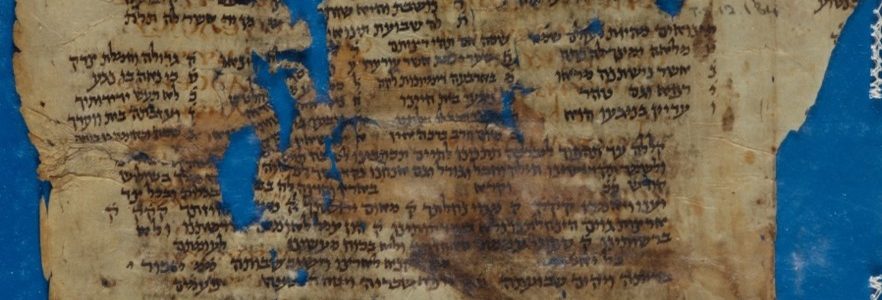
Printing, Paper, and Provenance Projects in the Post-Medieval Genizah Collection
Guest post by Dr Nick Posegay.
One of the special collections here at the CUL is the Taylor-Schechter Cairo Genizah Collection. It contains over 190,000 fragments of manuscripts and printed texts that Cambridge agents acquired from Egyptian Jewish communities during the 1890s. These manuscripts survived for nearly a millennium in various Cairene ‘genizot’ (plural of ‘genizah’), secure locations meant to protect sacred texts once they had exceeded their useful lives. The acquisitions culminated in the winter of 1896-7, when Solomon Schechter, funded by Charles Taylor of St. John’s College, brought the vast majority of Genizah fragments from Cairo to CUL.
This “Cairo Genizah” corpus has since proven to be an unparalleled source for the study of Middle Eastern history, especially the history of Judaism in Egypt. The majority of Genizah manuscripts come from approximately 1000-1350 CE, so for more than a century, most Genizah researchers have been medievalists. The thing is, Cairo’s Jews continued storing books and papers in their genizot well beyond the 14th century, even up to the late 1800s. CUL scholars have known this since 1897, and some researchers have made good use of post-15th-century Genizah manuscripts to study topics like the diaspora of Iberian Jews to the Middle East and North Africa after 1492.[1]
As you go later though, the number of identified fragments rapidly drops. Thousands of manuscripts definitely exist from later periods, and we have a pretty good idea of where they are in the library stacks, but as you get closer to the 19th century, there is less and less catalogue data to help you along. The CUL’s Genizah Research Unit (GRU), of which I am a member,[2] is responsible for studying and cataloguing the Taylor-Schechter collection. The lack of data for later material reflects our priorities over the last few decades. Limited staff resources mean we focus on manuscripts that other Genizah scholars already think are important. Those tend to be medieval – the earlier, the better. The occasional late fragment may attract attention as a curiosity, but at the moment we do not systematically document them.
Last year I started to wonder: Do we even know what the “latest” item in the collection is? The “earliest” is a 6th-century copy of a Greek Bible translation. It looks like this:
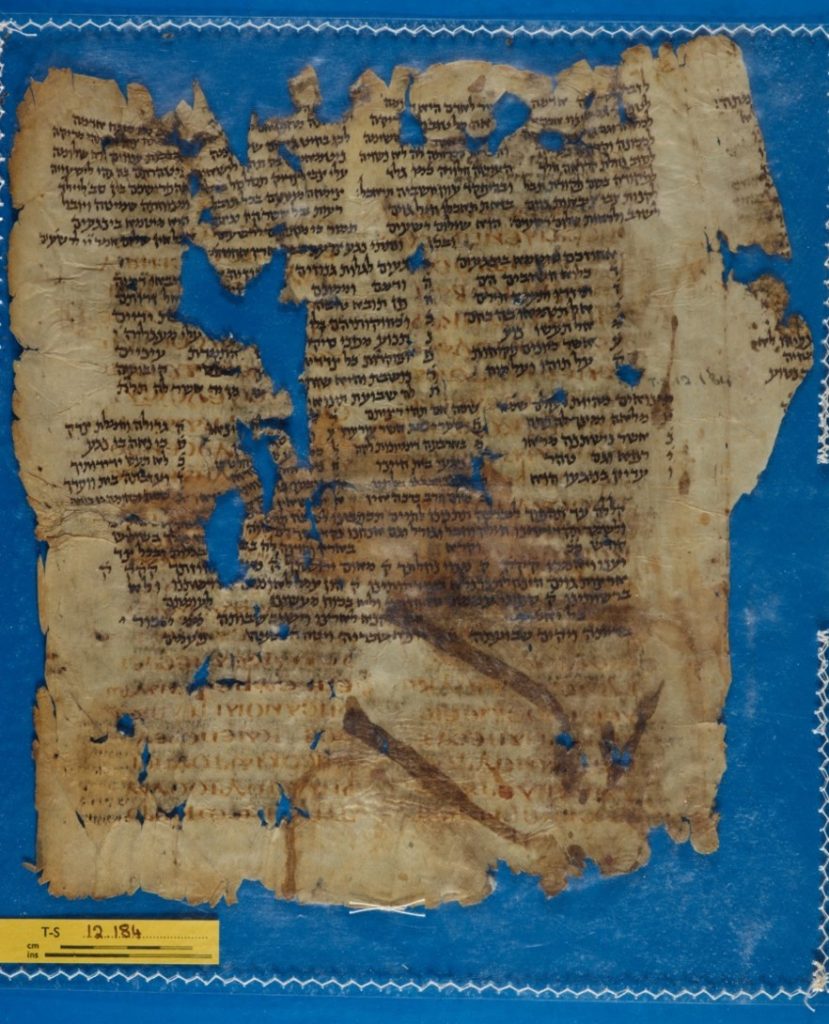
But what’s the latest fragment? This question began as another curiosity. It led to a broader study and several interesting discoveries about the history of the Taylor-Schechter collection.[3] I found that hundreds of Genizah fragments were produced in the last few decades of the 19th century, even while people like Solomon Schechter were in Cairo purchasing medieval manuscripts.
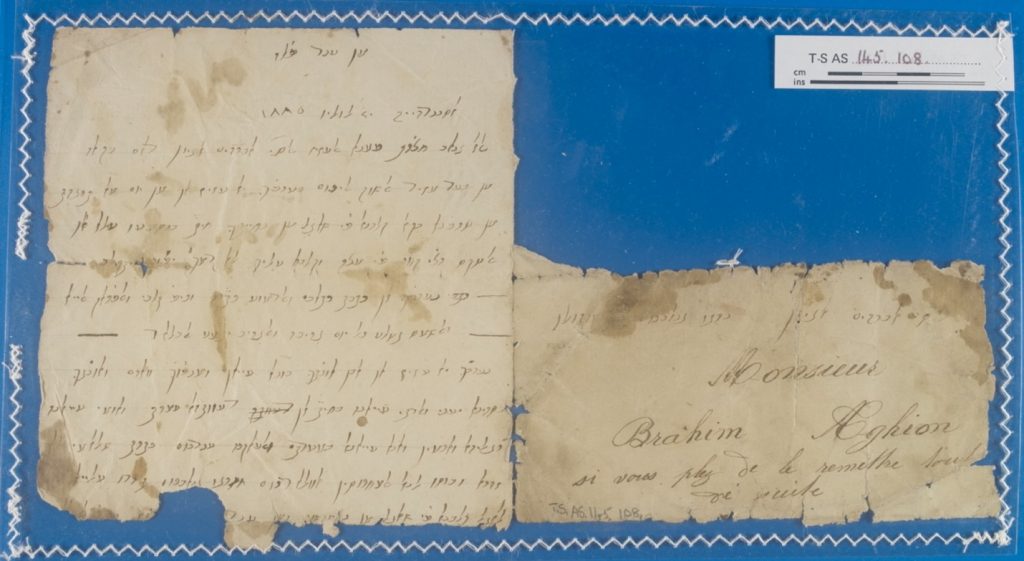
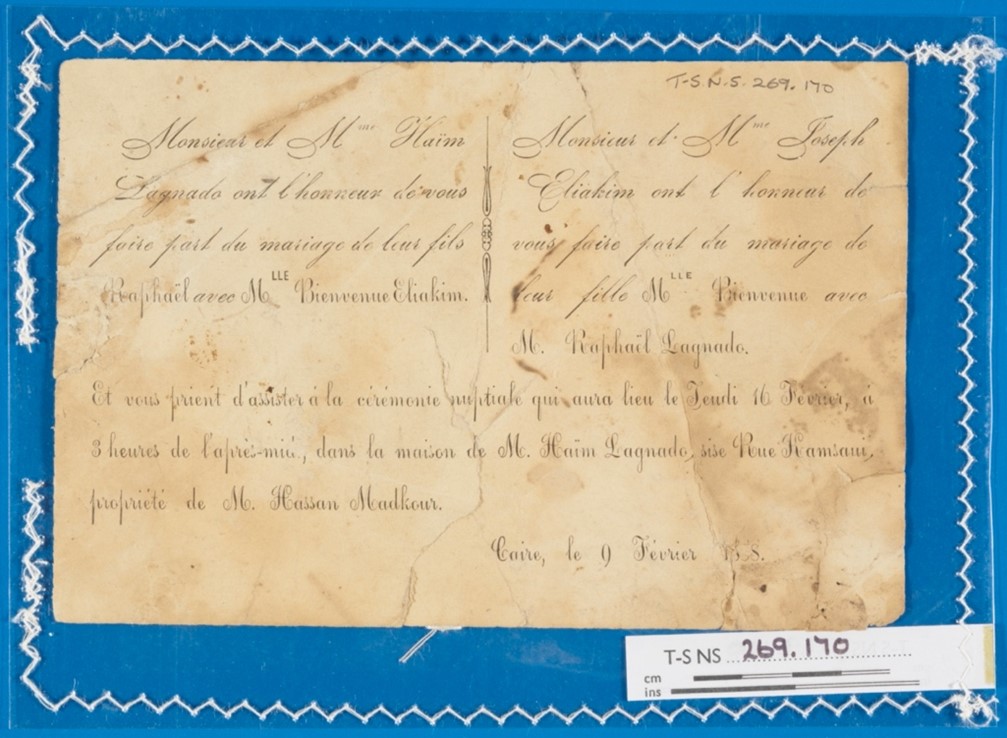
These items reflect a diverse Jewish literary landscape in Egypt under Ottoman and British rule, so most Genizah medievalists are not that interested in them. In fact, the GRU (myself included) lacks the expertise to properly study them all. They include 19th-century personal letters, newspapers, educational materials, wedding invitations, marriage contracts, and dozens of printed books. Quite a few of the books and newspapers are printed in Arabic. Since Arabic printing only really took off at the beginning of the 19th century, this material may be useful for tracking early Arabic printing presses. Surprisingly though, most printed Genizah fragments were produced in Europe. After 1800 they are mainly from Vienna and Livorno, which tells us a lot about what Egyptian Jews were reading and where they got their books.
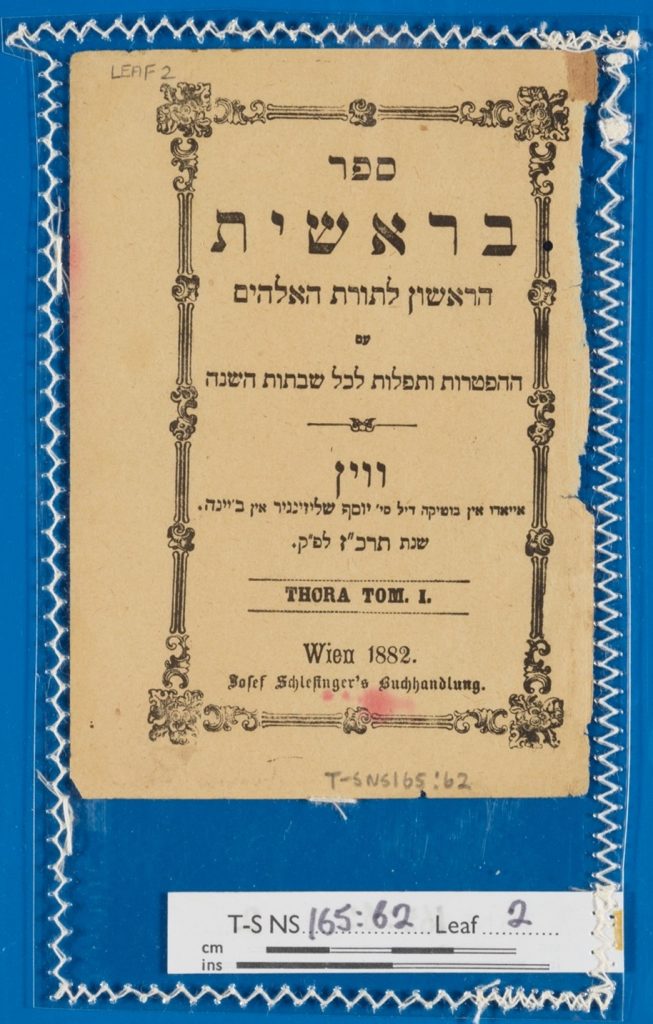
Even more surprisingly, my search turned up items in the Taylor-Schechter collection that were created after Solomon Schechter went to Egypt. Theoretically, this should be impossible, but it seems some CUL staff added more material to the unsorted Genizah boxes during the 20th century. Exactly when and how much, we still aren’t sure.
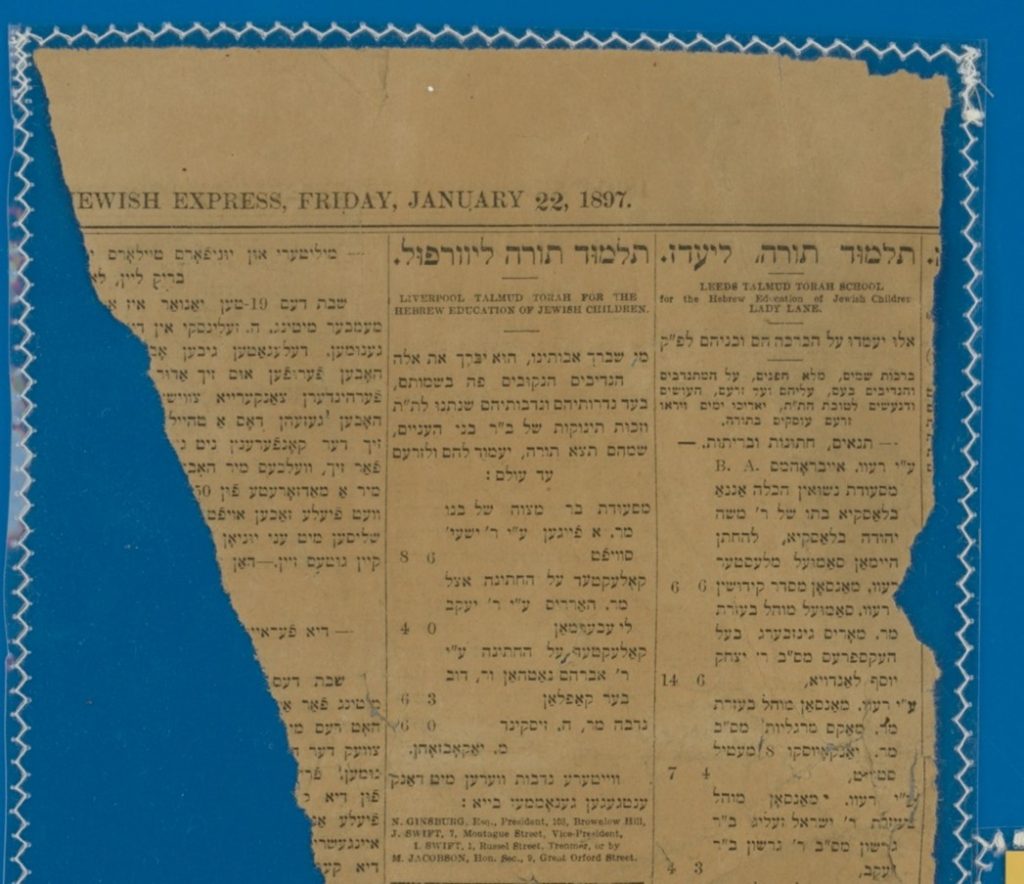
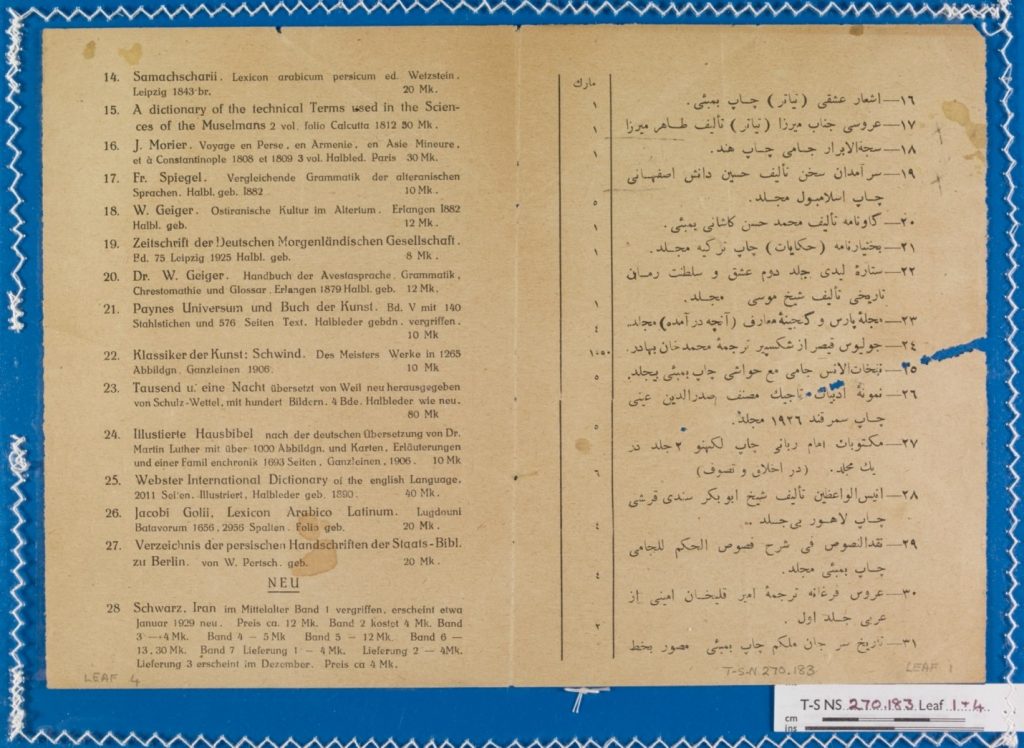
These findings raised even more questions about what we might learn by studying the post-medieval sections of the Taylor-Schechter collection. Last summer, as part of a GRU collaboration with the Faculty of English and CUL’s Thinking Paper project, I tackled another one of these questions: How much European paper is there in the Genizah?
It turns out, a lot. In the 13th century, Italian papermakers invented a new way of producing paper with watermarked images. European codicologists have documented many of these watermarks, so we can use them to identify when and where paper manuscripts were made.
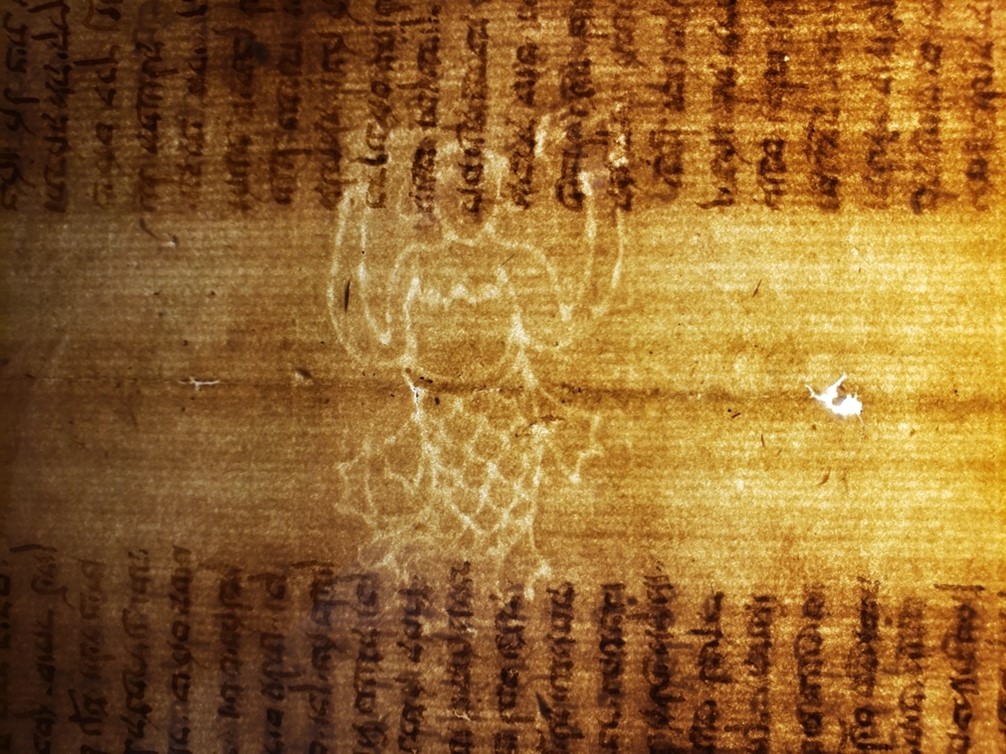
Watermarked paper, mainly produced in Italy and sold by Venetian merchants, begins to appear in the Genizah record during the early 15th century. This paper essentially took over Egyptian paper markets in the 16th century, and there are numerous Egyptian documents from that period in the Taylor-Schechter collection. This material is a novel source for studying the paper trade and movement of goods around the Mediterranean Sea, but Genizah scholars have done little to document it for this purpose. Meanwhile, European historians have little idea that it exists.[5]
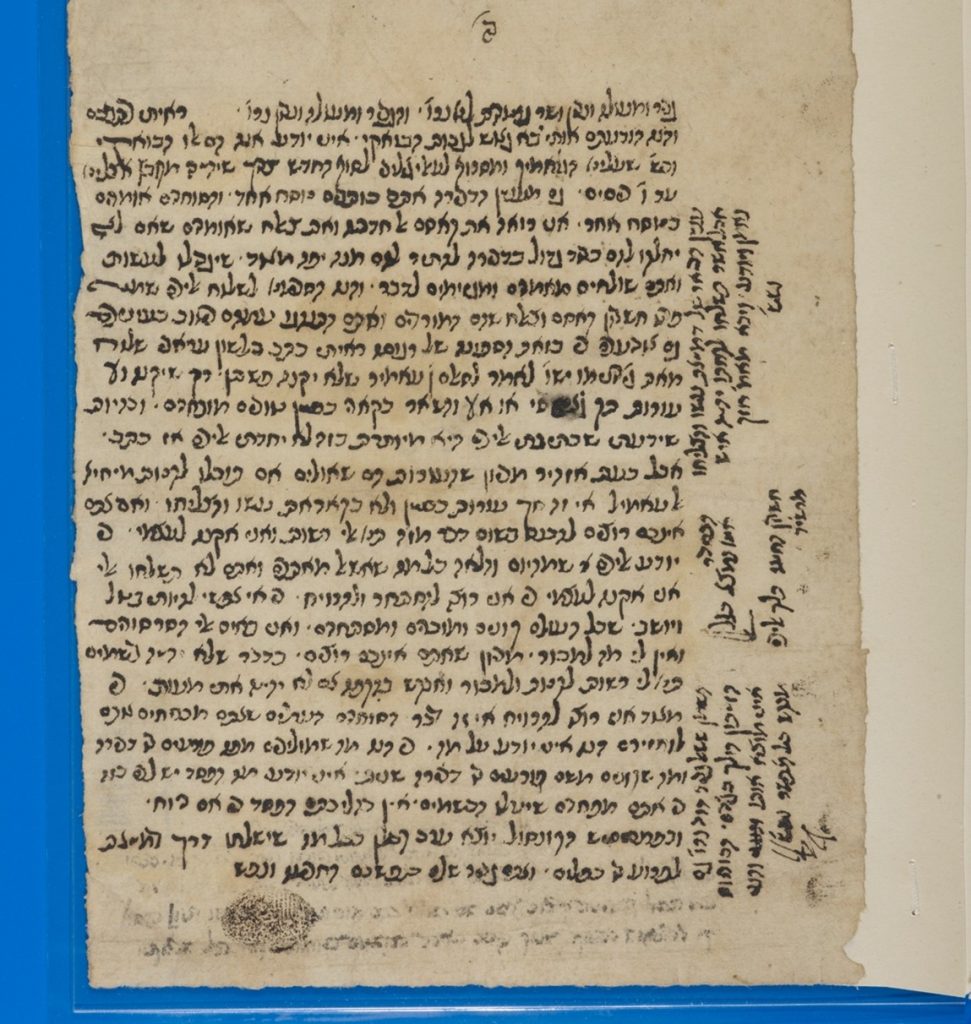
A key source of data for our paper survey was the early printed material also in the Taylor-Schechter collection. Printing is a bit of a taboo subject in the GRU, even though Cairo’s Jews had access to printed Hebrew books within just a few decades of Gutenberg’s moveable-type press. My colleagues often consider it “too late” to be worth studying, and they even joke about how the printed folders in the library’s T-S stacks are so dusty from lack of use. This is an attitude that has survived since the time of Schechter himself:
“Such printed matter proved a source of great trouble. It is true that it occasionally supplied us with loose sheets of lost editions, and is thus of considerable interest to the bibliographer. But considering that the Genizah has survived Gutenberg for nearly five centuries, the great bulk of it is bound to be comparatively modern, and so is absolutely useless to the student of palaeography.”[6]
Despite the aggressive dismissal of stuff he didn’t care about,[7] Schechter was right about one thing. The Cairo Genizah corpus contains thousands of pages from books printed between 1450 and 1897. Some of them are incunabula (i.e. 15th-century), though more were produced in the 16th and 17th centuries. It seems that while Cairene Jews had the closest connections with Venetian printers at this time, they also experienced healthy competition from printing presses in the Ottoman Empire. The concentration of Genizah imprints declines during the 18th century, with Venetian books persisting until about 1750.[8]

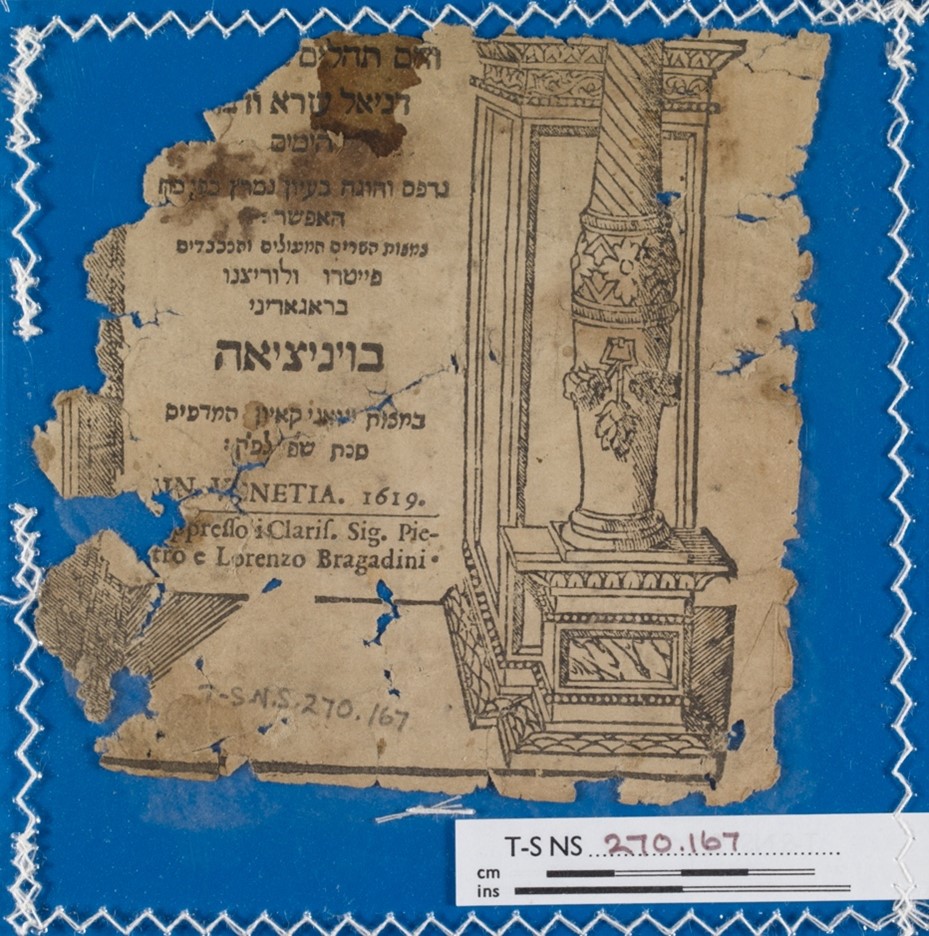
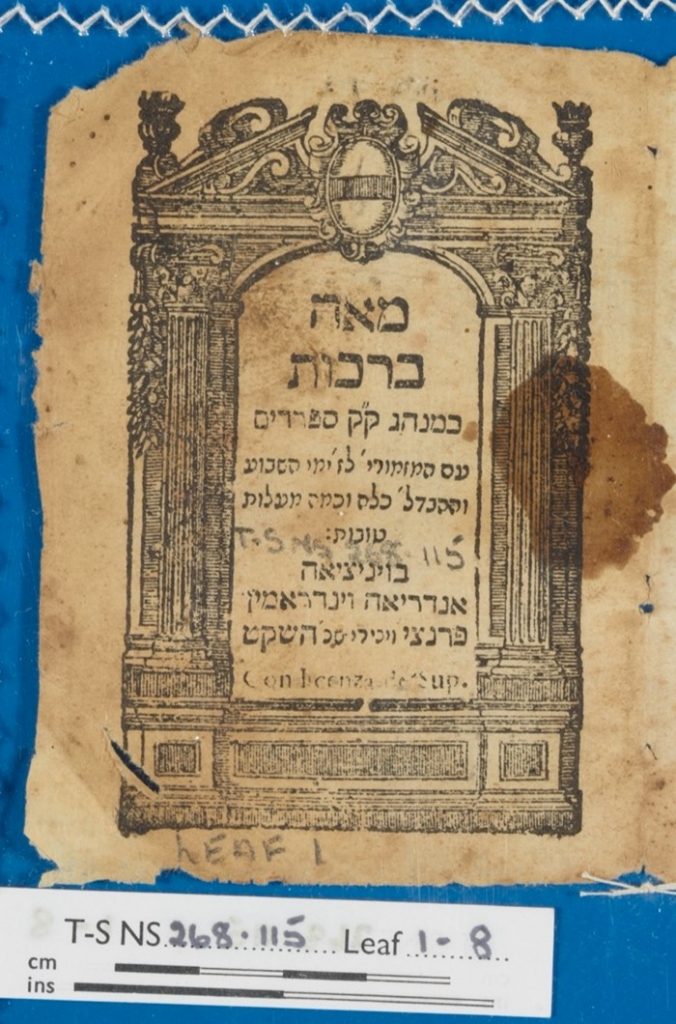
Most (not all) of these books are known editions,[9] which was Schechter’s main complaint about them. This does somewhat diminish their value for bibliographers. What Schechter missed, however, was the importance of these imprints for the material history of Europe and Egypt. No matter where they were printed – Venice, Lisbon, Guadalajara, Trieste, Livorno, Constantinople, Vienna, Salonika, Sabbioneta, or elsewhere – we know that they ended up in Cairo. By combining that fact with other information, such as paper types and watermarks, we can build a better picture of the Mediterranean networks where books travelled during the early modern period.
These investigations of post-medieval Genizah fragments make it clear that the Genizah Research Unit has never been fully equipped to deal with all the material in the Taylor-Schechter collection. There is still plenty of work to do on earlier manuscripts, but for the rest of the collection – literally tens of thousands of classmarks – we need some help from other experts. Specifically, experts in early modern social and economic history, especially Italian and Ottoman historians, as well as scholars of European codicology, Hebrew and Arabic print culture, Ladino and Arabic language, and colonialism in Egypt. That may mean the CUL hiring more researchers to work on Genizah material, more collaborations between the GRU and other organisations, or experts in related fields undertaking their own Genizah projects. No matter what though, we still have a lot to learn.
Addendum: For anyone interested, you don’t need to visit Cambridge or have a university affiliation to look at the Taylor-Schechter collection. The whole thing is digitally accessible via the Friedberg Jewish Manuscript Society database: https://fjms.genizah.org (make a free account) and the Cambridge University Digital Library: https://cudl.lib.cam.ac.uk/collections/genizah
Dr Nick Posegay is a Research Associate in the Genizah Research Unit at CUL and a Leverhulme Early Career Fellow in the Faculty of Asian and Middle Eastern Studies at Cambridge. His book Points of Contact: The Shared Intellectual History of Vocalisation in Syriac, Arabic, and Hebrew (Cambridge: Open Book Publishers, 2021) recently won the British & Irish Association for Jewish Studies Annual Book Prize.
[1] For example, see Eleazar Gutwirth, ‘Sephardi Culture of the “Cairo Genizah People” (Fifteenth to Eighteenth Centuries)’, Michael 14 (1997): 9–34. The Princeton Geniza Project has also identified quite a few late dated fragments from various Genizah collections (sort by date here: https://geniza.princeton.edu/en/documents/).
[2] And which does not really know I’m writing this. They also have their own blog separate from this one.
[3] Nick Posegay, ‘Searching for the Last Genizah Fragment in Late Ottoman Cairo: A Material Survey of Egyptian Jewish Literary Culture’, International Journal of Middle East Studies FirstView (2022): 1–19, https://doi.org/10.1017/S0020743822000356.
[4] I wrote this caption as a joke, but it appears that the actual Starbucks logo is descended from a 15th-century French drawing of a twin-tailed mermaid that is clearly related to the mermaid watermarks.
[5] Prof. Orietta Da Rold (one of the heads of the Thinking Paper project) and I are working on an article about the results of our Genizah paper study.
[6] Solomon Schechter, Studies in Judaism: Second Series (Philadelphia: Jewish Publication Society of America, 1908), 7. He goes on to say how he spent two months throwing away most of the printed material.
[7] This theme continues onto the next page, where Schechter is aggressively dismissive about Egyptian workers.
[8] See Nick Posegay, ‘Hebrew Printing and Printers’ Colophons in the Cairo Genizah: Networking Book Trade in Europe and the Ottoman Empire’, in Literary Snippets: Colophons Across Space and Time, ed. Sabine Schmidtke and George A. Kiraz (Piscataway, NJ: Gorgias Press, forthcoming), which will probably be published someday.
[9] See Dov Cohen’s excellent work on Ladino printing: Dov Cohen, ‘Missing Treasures: Tracking Lost Ladino Books’, Zutot 17, no. 1 (2020): 58–73, https://doi.org/10.1163/18750214-12171085.
